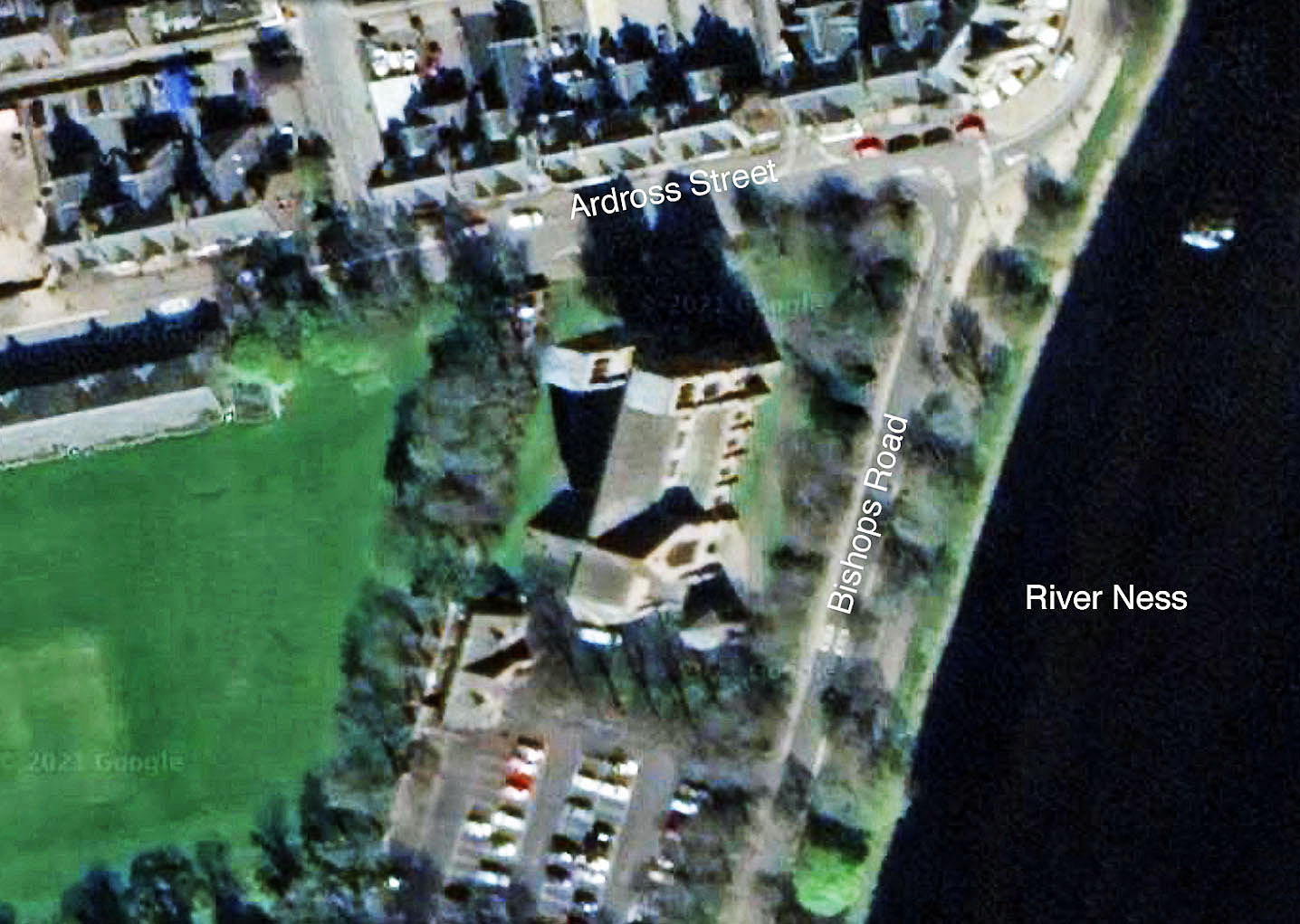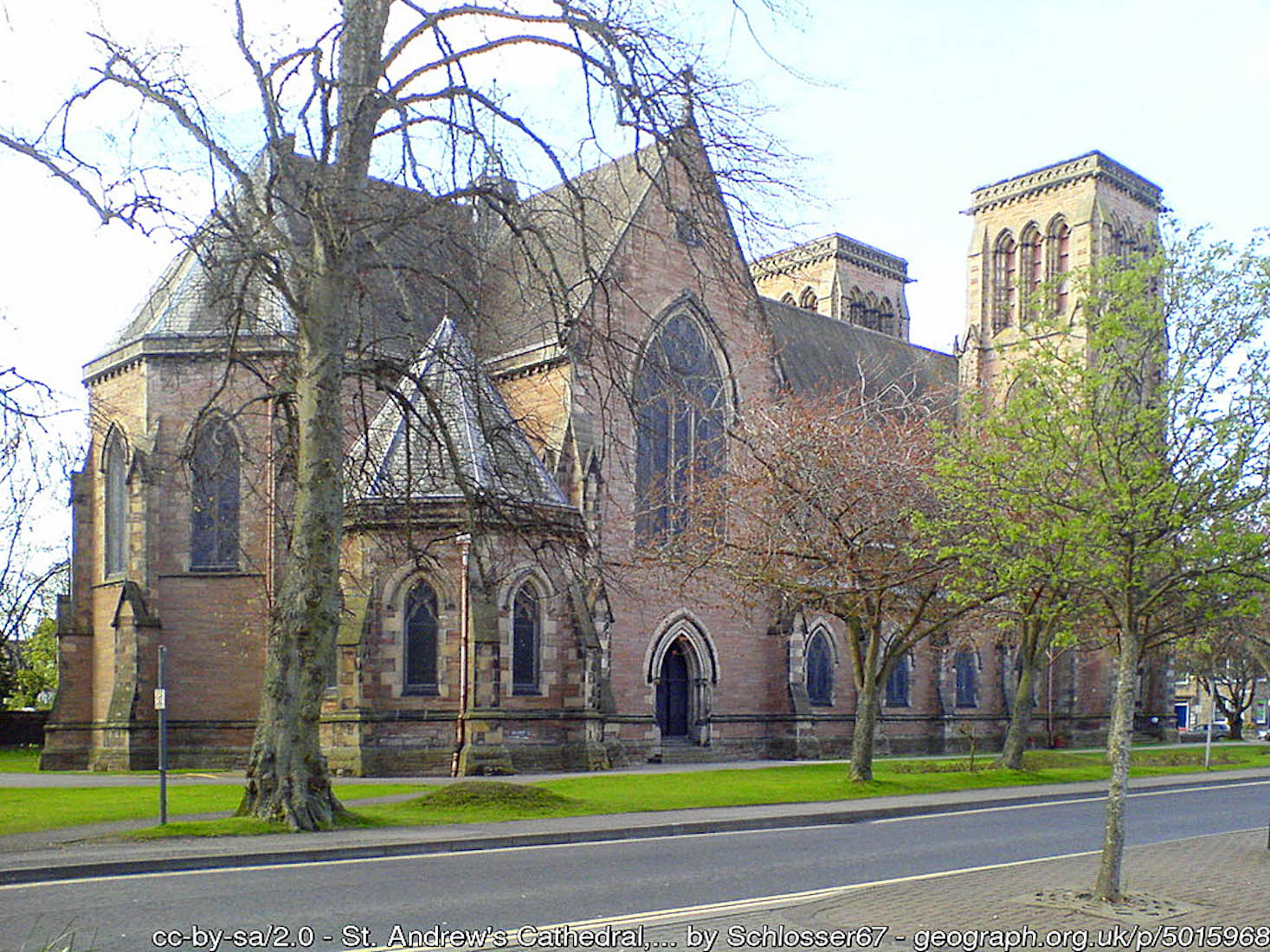The main photographic contributors to this site on Inverness Cathedral are ‘Grangeburn’ and ‘Maljoe’ who have willingly supplied their excellent photographs. There are also several accredited photos, mostly under the Creative License scheme, CCL, acknowledged in the text. The initials JG (Grangeburn), MJ (Maljoe), etc will denote our contributors. I have been delighted at how ready people have been to let me use their excellent photos. Further details about our contributors are given in the Conclusion.
A brief history of this Cathedral is given below. However, if you want to begin your tour of the Cathedral immediately, tap / click on START. You can also access intermediate points in the tour by a tap / click on the following links:
NOTE ON MAGNIFYING IMAGES
With this website format the images are large enough for most purposes. If there is a need for greater magnification of an image, go to the identical photo on the appropriate website listed in the Conclusion.
SATELLITE VIEW Go
The available satellite view of the Inverness Cathedral is of very poor quality, but it will still provide us with some information. It sits on the west back of the River Ness, bounded by Ardross Street and Bishops Road. It has been built parallel to the river, meaning that its main axis runs from north-northeast (NNE) to south-southwest (SSW), with the sanctuary at the southern end. This will be a good case for using our liturgical directions, denoting the sanctuary direction by East (with a capital E), and the other directions accordingly.
The Cathedral has a very simple cruciform layout with the transepts incorporated into the nave side aisles. This makes the transepts much less noticeable in the interior. There is an apse at the sanctuary end, and twin square towers at the West end (closest to Ardross Street). There is also a separate building at the other end, near the parking area, which contains a visitors’ centre and tea room. In the Northeast corner (bottom right) is a small attached octagonal chapter house.
I could find no plan of this Cathedral.

HISTORY
Years Built: 1866-1869
Address: Cnr Ardross Street and Bishops Street
Inverness Cathedral, also known as the Cathedral Church of Saint Andrew, is a cathedral of the Scottish Episcopal Church situated in the city of Inverness in Scotland close to the banks of the River Ness. It is the seat of the Bishop of Moray, Ross and Caithness, ordinary of the Diocese of Moray, Ross and Caithness. The cathedral is the northernmost cathedral in mainland Britain (Dornoch Cathedral is not actually a cathedral) and was the first new Protestant cathedral to be completed in Great Britain since the Reformation.
Bishop Robert Eden decided that the Cathedral for the united Diocese of Moray, Ross and Caithness should be in Inverness. The foundation stone was laid by the Archbishop of Canterbury, Charles Longley, in 1866 and construction was complete by 1869, although a lack of funds precluded the building of the two giant spires of the original design. The architect was Alexander Ross, who was based in the city. The cathedral is built of red Tarradale stone, with the nave columns of Peterhead granite.
The cathedral congregation began as a mission in 1853, on the opposite side (east) of the River Ness.
The Cathedral contains a ring of ten bells, which are noted as being the most northerly peal of change-ringing bells in a church in the world. The tenor bell weighs 17 cwt.
https://en.wikipedia.org/wiki/Inverness_Cathedral
The Cathedral began as the Mission in 1853, on the opposite side of the River Ness. Bishop Robert Eden decided that the Cathedral for the united Diocese should be in Inverness and in July 1862 excavations for the new Cathedral began, to plans by Alexander Ross, which were to prove to be his masterpiece. The foundation stone of this, the first new Cathedral to be completed in Great Britain since the Reformation, was laid in 1866 by the Archbishop of Canterbury, and the Cathedral was opened for public worship in 1869.
The Cathedral is built of Red Tarradale Stone, with a Nave of five bays divided by columns of Peterhead granite. The High Altar and Reredos are of Caen stone. The panels in the Reredos are: the Agony in the Garden; the Crucifixion; and the Resurrection. The Pulpit is of Caen stone and green marble and rests on short columns of Abriachan granite.
The white marble Angel Font is a copy of the Kneeling Angel Font by the Danish sculptor Thorvaldsen in Copenhagen, although the face is that of Mrs Learmouth, wife of General Learmouth who gave it. There are 11 bells by Warner, restored in memory of Bishop Duncan MacInnes (1953-70).
The Cathedral is a living and vibrant place, the congregation that worships here is drawn from across the local community and shares its fellowship with people from across the diocese and beyond.
The regular pattern of daily prayer and daily celebrations of the Eucharist places the other activities of the Cathedral within an environment of worship. The Cathedral uses the full breadth of Episcopalian worship and tradition within this cycle of worship. We celebrate the Eucharist in Gaelic on a number of occasions each year and we have both full choral services and quiet said services.
The cathedral is used for many civic and community events. The cathedral is also a place that many people wish to come to celebrate the important moments in their lives, and there are a number of weddings each year.
https://morayepiscopalchurch.scot/inverness-cathedral/



